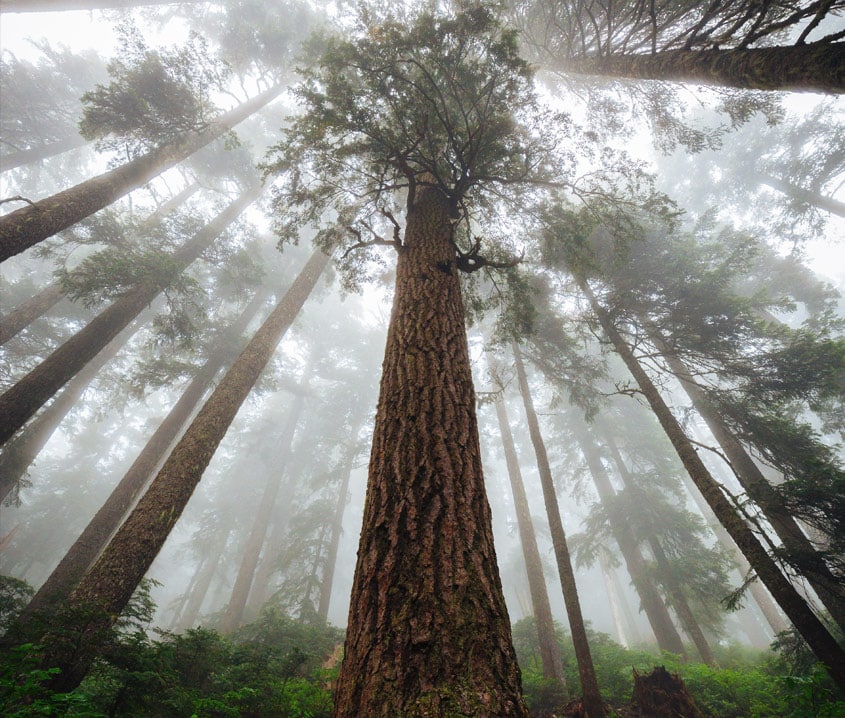I’m thankful for all the seasons, but spring is hard to beat. From the Red Bud Trees (Cercis Canadensis for those of you keeping score at home) that blossom in the median of Kingwood Drive, to the Oak and Ash that seem to burst with lush verdancy almost overnight, spring reminds me of the life we have in Christ more than any other season. And since we reside in the “Livable Forest,” it’s hard to miss the spiritual parallels between what The Gardener does in and around the soil of a tree, and how He tends to the soil of a human heart. Psalm 1:1-3 reads…
Blessed is the one
who does not walk in step with the wicked
or stand in the way that sinners take
or sit in the company of mockers,
2 but whose delight is in the law of the LORD,
and who meditates on his law day and night.
3 That person is like a tree planted by streams of water,
which yields its fruit in season
and whose leaf does not wither—
whatever they do prospers.
Whatever is going on in a healthy tree is something that also goes on inside a healthy Christian, and likewise a healthy church. Ask any church member, and they will tell you that one of the primary ways a believer grows in Christ is through His Word—the “law of the Lord” mentioned in v. 2. We find delight in it—we want to read it—and think about it day and night. Ultimately, that person becomes like a healthy tree. Well-rooted. Bearing fruit. Providing comforting shade. But there’s something else about a tree planted by streams of water.
It doesn’t typically stand on its own.
Though I’ve never seen the giant Sequoia trees in Northern California, I have seen their cousins, the California Redwoods in Muir Woods, just north of San Francisco. The words “tall” and “majestic” don’t do these trees justice. They are, simply, some of the oldest living organisms on the planet. Some of them were alive 200 years before Christ was born. They are certainly the largest living organisms on the planet, many reaching over 300 feet in height, with trunks that can grow to over 100 feet in circumference.
Sequoias don’t have taproots, the main deep root that keeps it from falling over during storms. They have surface roots that extend not down, but sideways, often covering up to an acre of ground. These trees grow in clusters, close to other trees. Their roots reach out and intertwine with the roots of every other tree, and not just Sequoias. They hold hands underground with the rest of the forest. If one of these trees was alone, it wouldn’t survive.
Zoologist Bernd Henrich writes “I am careful not to thin my pines out too much because young trees grow best in crowds where they support each other in storms. By removing too many, the remainder are endangered by windthrow.”
This flies in the face of individualistic America. “You can’t knock me down! I’m strong on my own, apart from the crowd. I am all of this, and if you can’t be too, then there must be something wrong with you.”
Need counseling? You must be crazy, so don’t admit it.
Need to confess sin? You must be a failure, so don’t let anyone know.
Need relationships? In of all places, the church? You must be weak, so don’t admit you need anybody!
But scientists (of which I am not one!) continue to learn more and more about the forest, and it looks more and more like our God has given us a beautiful picture of how we can do life together. Living organisms in the forest are richly interconnected with one another. In Elmer Fudd fashion, you could call it the Wood Wide Web. Say that quickly three times.
The “cat-5” cables of this interdependence are really a type of fungus that connects trees with a series of “tubes” that are about 1/10” of the width of an eyelash. These fungi are wrapped around the roots of the trees and help supply the trees with nutrients. But they also allow one tree to connect to other trees.
If, for instance, a tree is injured by a beetle, it can “cry out” in a chemical kind of way, sending signals through the fungi to other trees around it. The other trees will then produce chemicals that taste really bad, and beetles don’t want to eat them.
Or, during drought, if one tree has leaves that are yellowing and it starts dying, it can send much of its carbon (think sugar) down through its roots into this fungal system, giving it away to other neighboring trees. And once you understand that the trees are all connected to each other, that they are they’re all signaling each other, sharing food and nutrients with each other, it has the feel, the flavor, of something very similar.
The church.
Who do you have that you can cry out to when times get tough?
Who is around you that you can serve and minister to?
Like trees, we encounter storms that break limbs and cause pain and scarring. Times of spiritual drought can reduce our resistance to the things of this world. Impoverished soil that lacks nutrients can weaken the life of a tree. But the greatest single cause of tree loss by disease in forest stands? Heart rot. Open wounds that never heal lead to destruction from within. I think that’s what the Psalmist is warning us about in Psalm 1.
It’s not enough for one to “withdraw” from the wicked, because they aren’t a source of life. One must also “draw” toward a source of life—God’s Word, and by implication, other people who are also being planted by streams of water. Think of it this way:
v. 1—“Blessed is the one who does not walk in step with the wicked or stand in the way that sinners take,” because Jesus is the Way.
v. 2—“but whose delight is in the law of the Lord,” because Jesus is the Truth.
v. 3—“That person is like a tree planted by streams of water, which yields its fruit in season and whose leaf does not wither—whatever they do prospers,” because Jesus is the Life.
Spring brings a necessary ending to the winter, and a welcome change in our climate. As I slide out of the Creative Arts position I’ve been in for the last 20 years (and for 9 years before that at another church) and into the Spiritual Formation position at Woodridge, I get excited about helping people grow, and in essence, change. We all need a necessary ending to the winter of our lives, so we can move into the next season of life. In taking that grand step of faith to move from one season to another, we will be slowly transformed into the people we were created to be—followers of Christ who display His glory to the world.
Think of me as a gardener of sorts, someone who can walk alongside you and your class or small group, and be of help. Perhaps your class needs a landscaper to see where future growth needs to happen, and how it can be planned for. I can imagine that some classes may want a “soil analysis” to help determine why something doesn’t grow as you think it should. Maybe you as an individual need someone to assist you in pruning, so that you might be more fruitful than ever before. And we all need at times someone to point us toward the Source of Life—the Lord and His Word, and I love doing that!
Let’s deepen our roots together.
Hugh Poland
Discipleship Pastor





